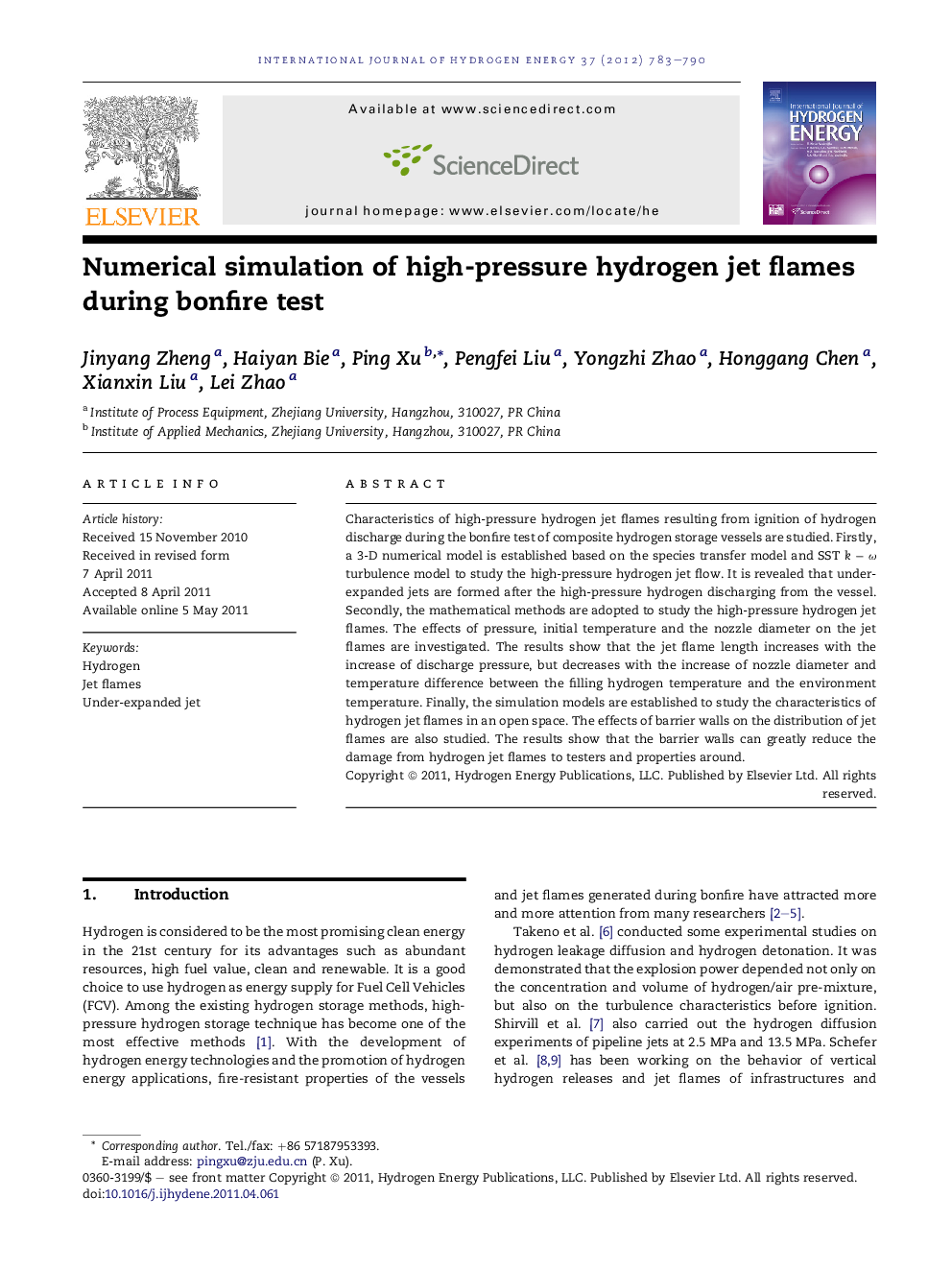| Article ID | Journal | Published Year | Pages | File Type |
|---|---|---|---|---|
| 1277196 | International Journal of Hydrogen Energy | 2012 | 8 Pages |
Characteristics of high-pressure hydrogen jet flames resulting from ignition of hydrogen discharge during the bonfire test of composite hydrogen storage vessels are studied. Firstly, a 3-D numerical model is established based on the species transfer model and SST k − ω turbulence model to study the high-pressure hydrogen jet flow. It is revealed that under-expanded jets are formed after the high-pressure hydrogen discharging from the vessel. Secondly, the mathematical methods are adopted to study the high-pressure hydrogen jet flames. The effects of pressure, initial temperature and the nozzle diameter on the jet flames are investigated. The results show that the jet flame length increases with the increase of discharge pressure, but decreases with the increase of nozzle diameter and temperature difference between the filling hydrogen temperature and the environment temperature. Finally, the simulation models are established to study the characteristics of hydrogen jet flames in an open space. The effects of barrier walls on the distribution of jet flames are also studied. The results show that the barrier walls can greatly reduce the damage from hydrogen jet flames to testers and properties around.
► An under-expanded jet is formed when high-pressure hydrogen discharge from the vessel. ► The jet flame length increases with the increasing of discharge pressure. ► The jet flame length decreases with the increasing of temperature difference. ► The barrier structure of 45 ° is better to reduce the hazards of hydrogen jet flames.
